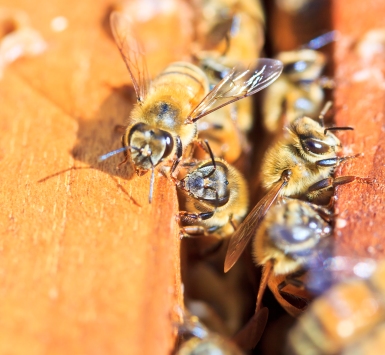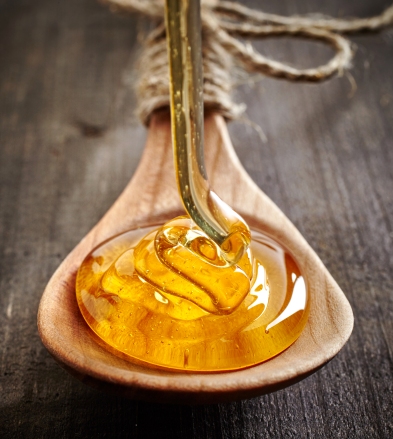 I am taking a beekeeping course and my dad is a beekeeper so I have bees on the mind a lot lately, which has lead me to write this post.
I am taking a beekeeping course and my dad is a beekeeper so I have bees on the mind a lot lately, which has lead me to write this post.
A thought came to mind when I was thinking of all of the available space and resources that makes beekeeping so efficient and necessary in rural areas – but what about in the city? Do urban apiaries exist? And if so, what are some of the challenges that they face living in a concrete playground?
Rural apiaries are necessary in several cases in order to provide pollinating services for the success of countless crops including many fruits, vegetables, nuts and coffee to name a few. But without these bountifully available crops in the city, I wonder whether beekeeping is even a viable hobby in more densely populated areas?
Google was very helpful when I was on the hunt for some answers regarding urban apiaries! I was very surprised to discover that beekeeping in the city is relatively common and is continuing to grow in popularity! The city is actually being considered as an oasis for bees because the colonies are not experiencing stresses from being exposed to agricultural pesticides. An article I read talked about how hotels are actually creating apiaries on top of their buildings and using the honey they produce in their hotel and/or harvesting fruit and vegetables for their restaurants. Kind of great if you ask me!

Although urban beekeeping has its benefits there are also some disadvantages. Multiple stresses can threaten urban hives including a lack of foraging and food resources for bees as well as legislation such as the Ontario Bees Act, which legally restricts beehives to be within 30 meters of a residence. What it comes down to is that people don’t want hundreds of thousands of bees buzzing around their homes (especially if they have children or allergies). Another challenge with this newly growing trend includes overcrowding apiaries, swarms of bees leaving their initial area and feral colonies setting up homes in places where they are not wanted and therefore need to be removed (they are wild after all!).
There seems to be a lot of negative impacts that may indicate that urban apiaries are not a viable option, but I think that if they are appropriately executed that it is a great thing for cities to pursue. Not only does it promote the improvement of declining bee populations by expanding the number of apiaries that exist but it can provide great pollinating services to businesses looking to provide locally sourced food.
Urban beekeeping can provide a taste of rural living, even if it is on the top of a high-rise building. Hopefully this trend will continue to grow!
More on urban beekeeping:
10 Urban Beekeeping Tips if you’re interested.
8 More Urban Beekeeping Tips – this article was so awesome!

Hey Candice! Sweet blog post. Are you taking the beekeeping course at the university? I took it a few years ago and I was super interested in starting my own hive. But it’s a little tough when I am a student and moving every 6-8 months haha. That was 2 years ago when I took it, and we had talked a bit about neonicotinoid pesticides and their serious effects on bees. Interestingly, in 2015, Ontario was the first in North America to ban this pesticide, aiming for a reduction by 80% by 2017. I am interested to learn about whether this has actually been effective to reduce mass exctinctions. Have you spoken about this in class? https://www.thestar.com/news/queenspark/2015/06/09/ontario-first-in-north-america-to-ban-bee-killing-neonicotinoid-pesticides.html
LikeLiked by 1 person
Sofia,
Yes, I’m currently taking the beekeeping course online. I wish I would have planned a little better so I could take it in the fall, since it has a lab component where you get more hands on experience but the online course is interesting nonetheless! Becoming a beekeeper is tricky if you’re moving around a lot, but you should definitely pursue it when you’re more stationary (I plan to do the same!).
We haven’t specifically talked about the goal of reducing neonic use by 80% by 2017 but we have talked mostly about the implications of the pesticide. I did my own digging to see if I could find an answer though. To be honest I never really found a clear “yes, we have reached the goal of an 80% reduction”. Rather, government websites were reinstating that they were working toward it. They also have the goal set for 2020 to reduce overwintering honey bee mortality by 15%. Overwintering deaths are more common in hives that are weakened by exposure to pesticides like neonicotinoids. So, although I’m still unclear whether they reached their goal that they set in 2014 I think that they’re on the right track.
I found it fascinating learning about urban apiaries and how they can actually be a sanctuary for bees because they are less exposed to pesticides. But I wonder if the benefit of having less exposure to pesticides outweighs the negative aspects, like poorer air quality and less natural vegetation to choose from for pollinating and collecting nectar and food.
I’m glad you enjoyed my post!
Candice
LikeLike